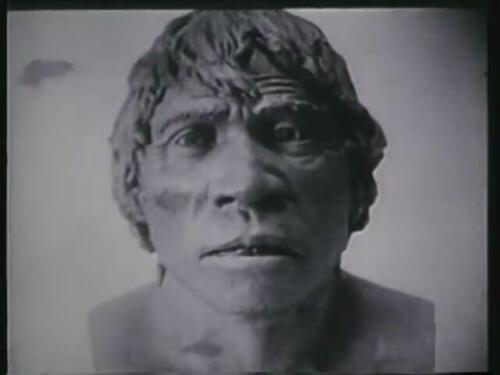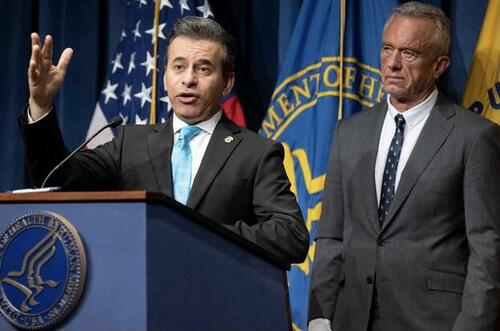Dems Need A Serious, Grown-Up Approach To The Border
Authored by Ruy Teixeira via The Liberal Patriot,
Back in 1956, Elvis Presley recorded his massive hit “Don’t Be Cruel.” With all due respect to the King, this great song has many virtues but providing a guide to policy isn’t one of them. Yet it appears to be dictating Democrats’ current approach to the red-hot immigration issue despite its profound inadequacy in the policy realm.
Consider that Democrats have been unremittingly hostile to Trump’s immigration policy since he began his second term, despite its undisputed success in completely shutting down the southern border to illegal immigration. Instead, Democrats have focused relentlessly on the question of interior enforcement—that is, the activities of the Immigration and Customs Enforcement agency (ICE) aimed at detaining and deporting illegal immigrants currently living within the United States. The general approach has been to portray all ICE actions as essentially illegitimate, arbitrary and, well, cruel.
Conspicuously lacking has been any recognition that, in fact, interior enforcement against illegal immigration is an entirely legitimate law enforcement operation and that ICE is the government agency charged with these legitimate activities. Therefore, what ICE does is presumptively legitimate not illegitimate.
Democratic treatment of ICE has turned this on its head; their activities are presumptively viewed as illegitimate and if there are any legitimate ICE actions, Democrats are being mighty quiet about it. Instead, characterizations of ICE as a modern-day Gestapo, Nazis, an occupying force, etc have become so common as to be unremarkable. This attitude has led Democrats down a path where their policy on interior enforcement against illegal immigration seems to amount to: “Don’t do it! Don’t be cruel!”
Of course, there is much not to like about how ICE has gone about their business, all of which has been copiously documented. This has been red meat to those sectors of blue America and their political representatives whose revealed preference is not to deport anyone. Think about those ubiquitous “In This House, We Believe” signs in liberal professional-class neighborhoods.
The ICE/interior enforcement issue hits the Daily Double for the “In This House, We Believe” crowd. No human is illegal. Check. Kindness is everything. Check. These may be utterly useless as guides to effective, sustainable immigration policy but they sure do get the juices flowing.
That’s why, from Los Angles to Minneapolis, Democratic activists have felt completely justified in interfering with ICE activities and Democratic politicians in refusing to cooperate with a duly constituted federal law enforcement agency. And that’s why, especially with the tragic recent death of Renee Good, calls of “Abolish ICE!” are beginning to ring out across wide sectors of the Democratic Party. There is no good ICE, only bad ICE. There is no legitimate ICE, only illegitimate ICE.
This is the logical terminus of an attitude that starts with no human being is illegal and kindness is everything. Since ICE’s remit is that illegal immigrants are, in fact, illegal and that the law must be followed, even if the outcome is not particularly kind, it only makes sense to get rid of the agency.
This is a terrible idea in so many different ways. As a very useful new memo from the reform Democratic group Searchlight points out:
[S]aying you want to “Abolish ICE”…means that you support getting rid of the agency responsible for enforcing immigration and customs laws, creating a lawless system where people who enter the country illegally can stay here indefinitely, leaving no agency charged with finding and removing them. This will, inevitably, incentivize others to come to the United States illegally. “Abolish ICE” is not some proxy for more humane immigration enforcement, or to change ICE’s culture to adhere to due process, or to impose accountability on rogue officers. It’s advocating for an extreme.
Unless you truly believe that the United States should not have an agency that enforces immigration and customs laws within our borders, and you want to increase illegal immigration, you should not say you want to abolish ICE…[W]e will always need a federal agency charged with deporting people who are in the United States illegally.
That’s clearly correct as a matter of policy. Democrats need to reflect that in how they talk about ICE or the momentum will continue to shift toward those in the party who simply want to get rid of the agency entirely.
And that would be a disaster. The reasonable—and popular—desire to reform ICE practices would inevitably be subsumed in a contentious debate about abolishing the agency. This is not likely to turn out well for the Democrats despite the solid basis in public opinion for some reform and pullback of ICE activities. Abolishing ICE will likely never be generally popular, despite its sky-high popularity with Democrats where there has been a recent spike in support.
Instead, as the Searchlight memo points out, Democrats will be setting themselves up for a rerun of the “Defund the Police” debacle, also driven by a viral incident (and also in Minneapolis!). A maximalist demand like “Abolish ICE” will serve only to signal a lack of Democratic commitment to immigration enforcement, just as defund the police signaled a lack of Democratic commitment to public safety. This is highly undesirable both for the Democrats politically and for the general cause of reforming ICE practices.
A further lesson from the recent past is provided by the Democratic reaction to Trump’s border crackdowns in his first administration. Seizing on some well-publicized excesses, Democrats pilloried Trump for being cruel and inhumane and promised to be different. And they were! They were kind and humane—and also completely ineffective at controlling the border and preventing abuse of the asylum system once they got back in power, producing the huge wave of illegal and irregular immigration that discredited the Democrats and helped Trump win the 2024 election. “Don’t be cruel” didn’t work out so well then and it won’t work out so well now, either in or out of power.
Democrats instead need to get beyond mindless slogans like “Abolish ICE” and blanket opposition to everything ICE does and embrace what I have termed immigration realism. That approach means taking on board the following realities of immigration into this rich country of ours:
-
Many more people want to come to a rich country like the United States than an orderly immigration system can allow.
-
Therefore, many people are willing to break the laws of our country to gain entry.
-
If you do not enforce the law, you will get more law-breakers and therefore more illegal immigrants.
-
If you provide procedural loopholes to gain entry into the country (e.g., by claiming asylum), many people will abuse these loopholes.
-
Once these illegal and irregular immigrants gain entry to the country, they will seek to stay indefinitely regardless of their immigration status.
-
If interior immigration enforcement is lax, such that these illegal and irregular immigrants do mostly get to stay forever, that provides a tremendous incentive for others to try to gain entry to the country via the same means.
-
If you provide benefits and dispensations to all immigrants in the country, regardless of their immigration status, this further incentivizes aspiring immigrants to gain entry to the country by any means necessary.
-
Tolerance of flagrant law-breaking on a mass scale contributes to a sense of social disorder and loss of control among a country’s citizens, who believe a nation’s borders are meaningful and that the welfare of a nation’s citizens should come first.
-
There is, in fact, such a thing as too much immigration, particularly low-skill immigration, and negative effects on communities and workers are real, not just in the imaginations of xenophobes.
-
If more immigration is desired by parties or policymakers, from whichever countries and at whatever skill levels, then immigration should be regular, legal immigration and approved by the American people through the democratic process. Backdooring mass immigration over the wishes of voters because it is “kind” or “reflects our values” or is deemed “economically necessary” leads inevitably to backlash. Wheelbarrows full of econometric studies on immigration’s aggregate benefits will not save you.
Obviously, the current Democratic vogue for treating all ICE activities as illegitimate and susceptibility to dumb maximalist slogans like “Abolish ICE” points them in precisely the wrong direction for dealing with the thorny and complex realities of the immigration issue. They’re just setting themselves up for future failure.
In short, it’s time to stop coddling the “In This House, We Believe” crowd and adopt a serious, grown-up approach to immigration and immigrants. “Don’t Be Cruel” isn’t gonna cut it.
Tyler Durden Sat, 01/17/2026 - 12:50


















 Marty Makary's FDA has deleted web content declaring that cellphones don't pose any health risks. HHS Secretary Robert F. Kennedy Jr (right) has previously suggested there are unknown dangers. (Saul Loeb AFP)
Marty Makary's FDA has deleted web content declaring that cellphones don't pose any health risks. HHS Secretary Robert F. Kennedy Jr (right) has previously suggested there are unknown dangers. (Saul Loeb AFP) "Never put one next to your head...you should not let your kids carry their cellphones on their breast," Kennedy told Joe Rogan in 2023
"Never put one next to your head...you should not let your kids carry their cellphones on their breast," Kennedy told Joe Rogan in 2023 A fjord in western Greenland on Sept. 16, 2025. Guglielmo Mangiapane/Reuters
A fjord in western Greenland on Sept. 16, 2025. Guglielmo Mangiapane/Reuters




Recent comments